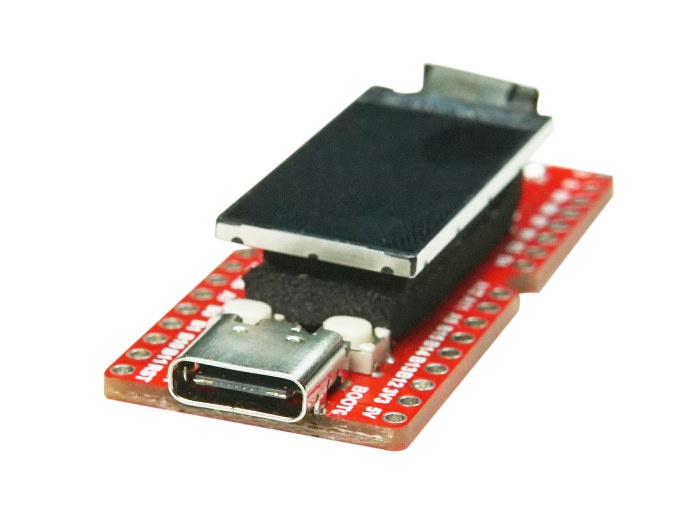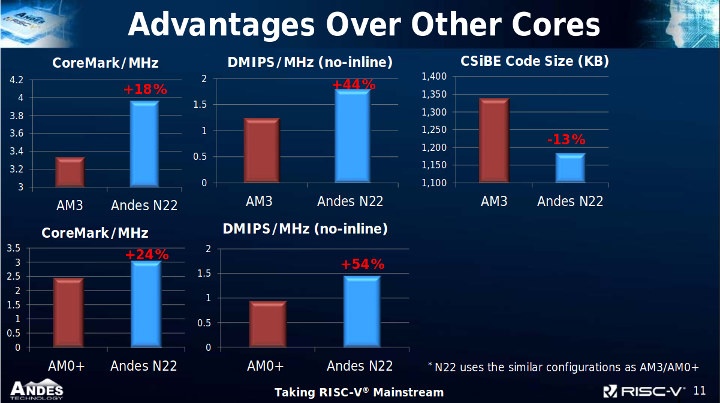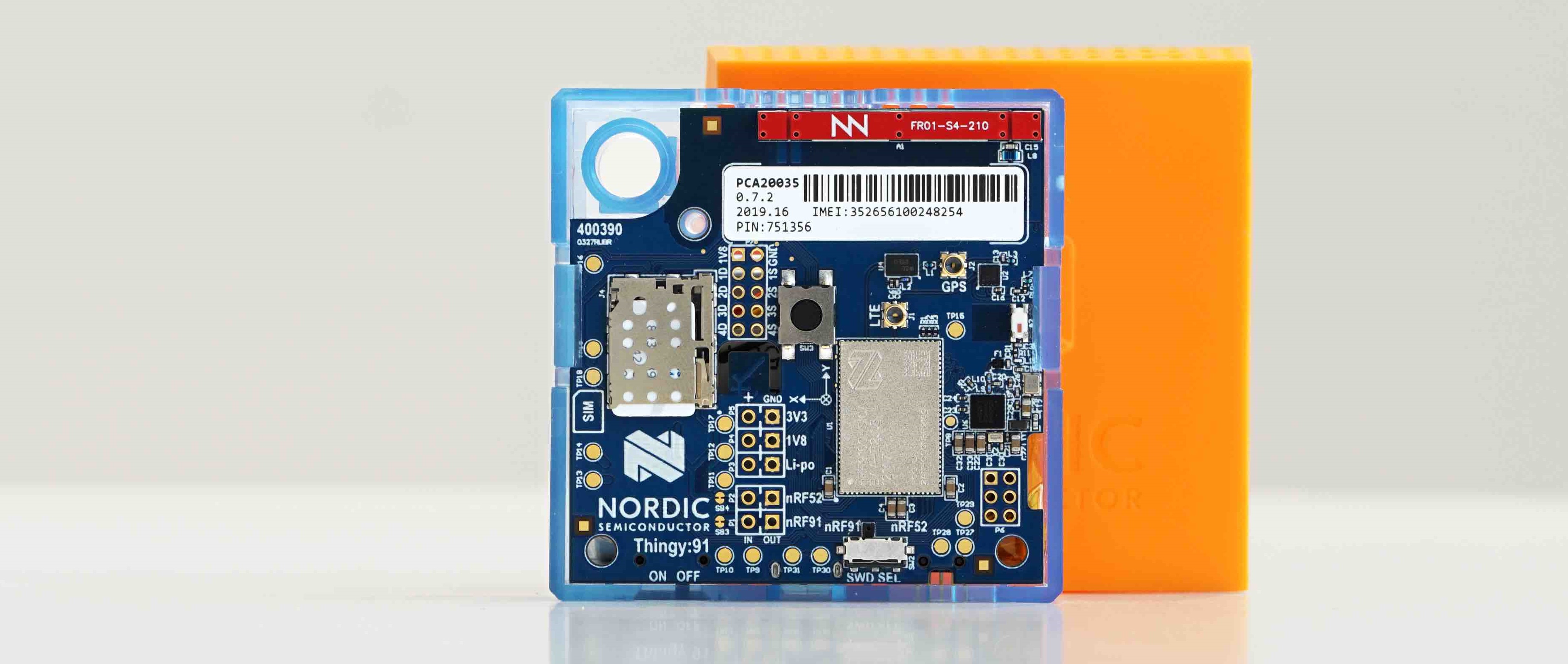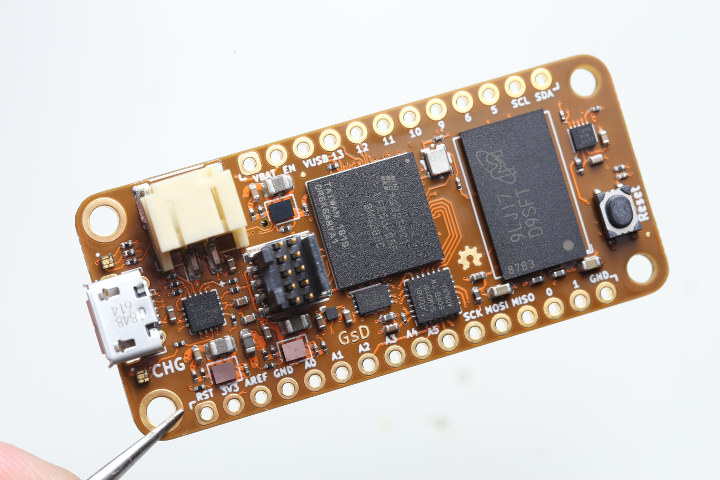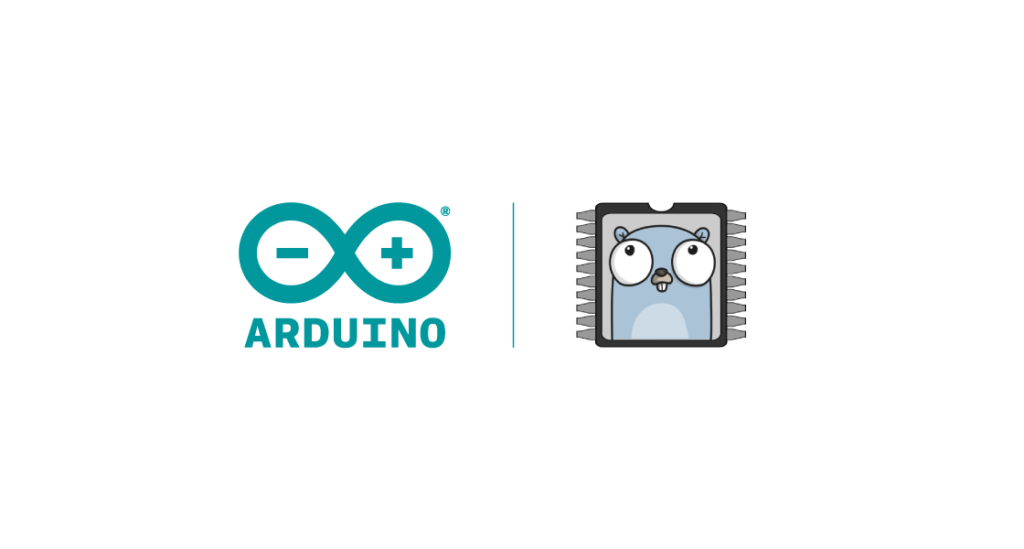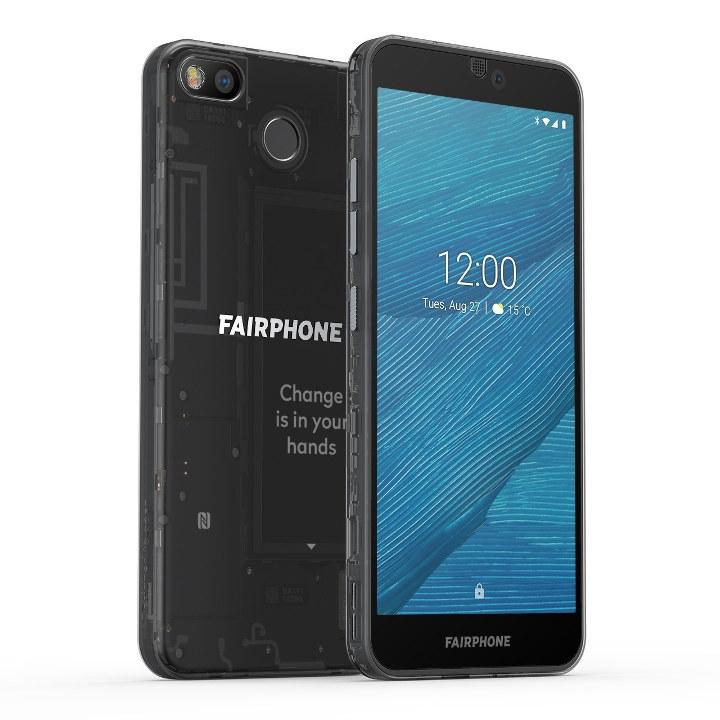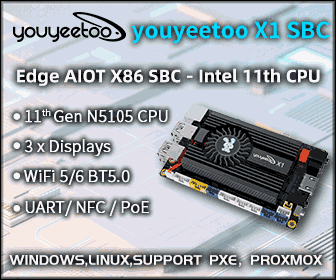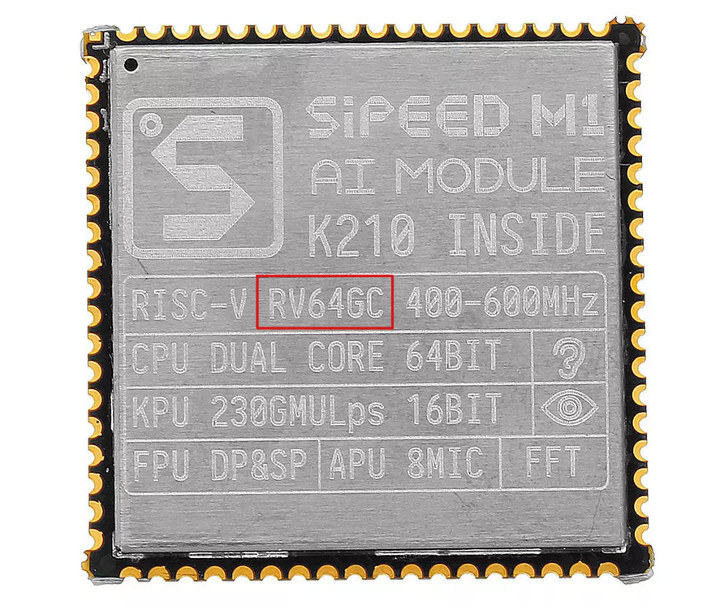There’s been some exciting news about RISC-V microcontrollers recently with Gigadevice announcing GD32V, one of the first RISC-V general-purpose microcontrollers, which outperforms its Arm Cortex-M3 equivalent in terms of performance and power consumption. The company also announced some development boards, but they are not quite that easy to purchase being listed on Tmall website in China. The good news is that Sipeed has introduced Longan Nano development board powered by GD32VF103CBT6 microcontroller, and it’s up for sale on Seeed Studio for $4.9. Longan Nano board specifications: MCU – Gigadevice GD32VF103CBT6 32-bit RISC-V (rv32imac) microcontroller @ 108 MHz with 128KB Flash, 32KB SRAM Storage – MicroSD card slot Display – 0.96″ 160×80 IPS RGB LCD connected via SPI USB – 1x USB Type-C port for power and programming Expansion – 2x 16 through holes (2.54mm pitch) exposing 3x USART, 2x I2C, 3x SPI, 2x I2S, 2x CAN, 1x USBFS (OTG), 2x […]
AndesCore N22 RISC-V Core Supports RV32IMAC or RV32EMAC Instruction Sets
We covered Gigadevice GD32V general-purpose microcontroller with a RISC-V “Bumblebee” core last week, and I was informed that Andes Technology had recently introduced AndesCore N22 RISC-V “Bumblebee” IP core capable of supporting either RV32IMAC or RV32EMAC instruction sets. A web search did not reveal any specific information about what “Bumblebee” RISC-V cores are exactly, or maybe it’s in reference that many can be coupled in parallel. But that’s just a small detail, let’s check out in some details what AndesCore N22 core has to offer. The RISC-V core is designed for entry-level MCUs found in IoT devices and wearables, and is capable of deeply embedded protocol processing for I/O control, storage, networking, AI and AR/VR. Highlights of AndesCore N22: AndeStar V5 (RV32IMAC) / V5e (RV32EMAC) Instruction Set Architecture (ISA), compliant to RISC-V technology plus Andes extensions architectured for performance and functionality enhancements 32-bit, 2-stage pipeline CPU architecture 16/32-bit mixable instruction […]
Nordic Thingy:91 Cellular IoT Prototyping Platform Comes with 16 Sensors
Nordic Semiconductor launched the Nordic Thingy:52 back in mid-2017 in the hopes of bringing app and web developers into the hardware ecosystem as fast and easy as possible. The Nordic Thingy:52 was a Bluetooth 5 IoT sensor development kit based on the company’s nRF52832 WiSoC. Although the Nordic Thingy:52 kit is still very much available for purchase and support always available, Nordic Semiconductor has gone further launching a new development kit called the Nordic Thingy:91 targeting cellular IoT applications. The Nordic Thingy:91 is a cellular IoT prototyping platform with support for LTE-M, NB-IoT plus GPS option. Even though IoT connectivity standards like LoRaWAN, BLE, WiFi, ZigBee, and others are very much growing and expanding, Nordic Semi is fully backing cellular technology, something that has very much been available and most likely will still keep been available, and the adoption of 5G is another testimony to that. Cellular is here, and […]
OrangeCrab is an Open Source Hardware, Feather-Compatible Lattice ECP5 FPGA Board
Lattice ECP5 FPGA powered OrangeCrab is the work of Greg Davill who designed the Adafruit Feather-compatible board in KiCAD, crowdsourced schematics/PCB checking and published his progress on Twitter, and published the files of the open source hardware board on Github. OrangeCrab board hardware specifications: FPGA – Lattice ECP5 25/45/85 variants System Memory – Up to 8Gbit DDR3 Memory (x16) Storage – 128Mbit QSPI FLASH Memory (Bitstream + User storage), 4-bit MicroSD socket USB – Micro USB connector, full-speed direct USB connection to FPGA Programming – 10-pin FPGA programming header Expansion – I/O’s broken out via 30 through holes: GPIO, SPI, I2C, Analog, … 7x diff pairs, 1x single ended only Misc – Reset Button, charge LED (Green: external power, Yellow: when charging, No color: when running off battery), 48MHz Oscillator Power Supply – 5V via USB port, battery header for LiPo battery + battery charger chip Dimensions – Adafruit Feather […]
TinyGo GO Compiler for Microcontrollers Now Works on Arduino Boards
Powerful, yet simple to use, TinyGo is making a significant mark in the open-hardware sector. This was well stated in the Arduino blog interview of Ron Evans, Technologist for Hire, as Arduino is now working with TinyGo on an ongoing basis. What is TinyGo? The whole purpose of TinyGo is to bring Go to the microcontroller and the latest web browsers, to have that powerful language able to function in tiny processor formats, such as the Arduino Uno and Arm-based processors such as the Cortex-M type processors and also the BBC Micro: bit, STM32 Bluepill, and some other MCU boards, from any web browser. How It Functions It does this through LLVM toolchain and that format allows TinyGo to compile Go programs to a fraction of their original size, then flash the reduced Go program directly onto the microcontroller. Web Browser Applications With WebAssembly TinyGo can be used with WebAssembly […]
Fairphone 3 Socially Responsible Android Smartphone Launched for 450 Euros
Most phones today are disposable items, and if yours stops working for whatever reason it’s hard to repair it yourself work, and repairing it at the shop may prove to be too expensive. They are not really expandable either, so if you want a new feature, you may have to buy a completely new phone instead of simply adding a module with the functionality. The difficulty in repairing the phone and the lack of modularity leading to electronics waste. Finally, consumer products are cost-optimized, and that’s great for your wallet, but it may come at the cost of being made by slave labor either directly at the factory, or indirectly through the mining of materials. Aren’t you already feeling bad being complicit in destroying the planet and sponsoring human suffering while reading this on your device? Good! But luckily there’s a solution with Fairphone that aims to be an ethical […]
MPEG Video Coding for Machines (VCM) is in the Works
A video codec for machines seems like a good topic for the first of April, or an article on the Onion. But based on a recent press release by Gyrfalcon Technology, this may become a real thing as the company partnered with China Telecom, and proposed a new video codec called “Video Coding for machines” (VCM) that provides compression coding for machine vision and human-machine hybrid vision. Apparently a recent study published by Cisco in 2018, humans will become bit players in the “video watching business”, and Machine-to-Machine (M2M) applications will represent the greatest usage of Internet video traffic over the next four years. So the goal of the VCM group will be to establish a new standard that will improve the previous generation video coding and decoding standards such as H.264 (AVC), H.265 (HEVC) and H.266 (VVC). Few details are provided so far, and I can’t find any VCM […]
RISC-V Bases and Extensions Explained
The other day we reported about GigaDevice GD32V general-purpose 32-bit RISC-V microcontroller, and one of the commenters asked whether it was rv32imac or rv32emac, and it turned out to be the former. In most cases, silicon vendors report whether they are using 32-bit, 64-bit, or the upcoming 128-bit RISC-V processors, but rarely go into details, so I asked why it mattered and got the following answer: RISC-V is a federation of ISA extensions — from the baseline rv{32|64|128}I, to an arbitrary combination of a handful of extensions. There are combinations which are dubbed ‘application-processor level’ (the G subset), but implementations can and often are not G-compliant, which is naturally the case with MCUs. Difference between rv32i and rv32e is 32-strong vs 16-strong GPR file, respectively. In the case of GD32VF103, rv32imac stands for a ‘full-size GPR file, integer mul/div, atomics, compressed (16bit) ISA’ set. What is missing from ‘application-processor level’ […]


